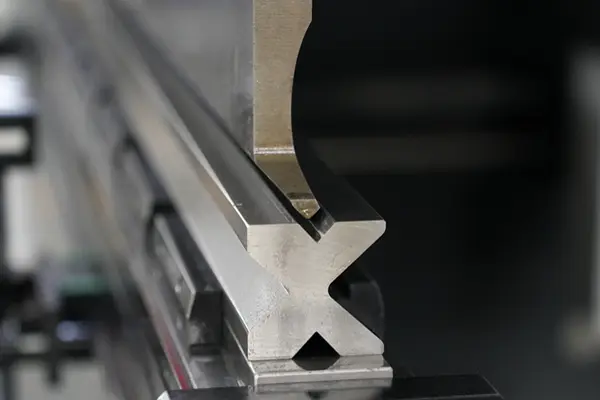Welcome to the intricate world of metal fabrication, where every bend and fold is a testament to precision engineering. The heart of this precision lies in the masterful selection of press brake tooling. Whether you're manipulating stainless steel or delicate aluminum, the right tooling can mean the difference between a flawless finish and a costly mistake. Journey with us as we unfold the secrets of selecting the perfect press brake tools for your metal fabrication needs.
- The Importance of Proper Tooling Selection in Metal Fabrication
- What is Press Brake Tooling?
- Material Considerations: Metals Commonly Used in Press Braking
- Standard vs. Precision: Choosing the Right Tooling
- Types of Press Brake Tooling
- Tooling Materials and Durability
- Compatibility and Machine Parameters
- Rules for Tooling Selection
- Maintenance and Safety
- Economic and Production Considerations
The Importance of Proper Tooling Selection in Metal Fabrication
When it comes to precision metal fabrication, the choice of press brake tooling is a pivotal decision that directly impacts the efficiency, quality, and cost-effectiveness of the production process. High-quality press brake dies and tools are the backbone of any press brake machine, ensuring that each bend in the metal is sharp, clean, and to the exact specifications required.
A deep understanding of the material you're working with, the type of bend required, and the capabilities of your press brake machine is essential. The right tooling selection can reduce setup time, extend the life of the machinery, and minimize material waste. On the flip side, incorrect tooling choices can lead to production delays, increased costs, and potentially hazardous situations for operators.
What is Press Brake Tooling?
At the heart of metal fabrication lies the press brake machine, a device designed to bend and shape sheet metal. And integral to this machine's function is what we call press brake tooling—the assortment of punches, dies, and other accessories that come into direct contact with the metal to create precise bends. This tooling is what molds the raw material into the desired form and angle.
Press brake dies and punches are tailored to the type of bend or fold required. For example, acute angle dies are used for small angle bends, while gooseneck dies allow for the creation of return flanges. The composition of these tools is critical—they must be made from high-grade materials to withstand the stress of bending metal while maintaining precision.
Understanding the intricacies of press brake tooling is crucial for operators, as the selection can dramatically impact the final product. Each tool is designed for a specific function, whether it's air bending, bottoming, or coining, and choosing the wrong one could result in subpar fabrication or damage to the machine itself.
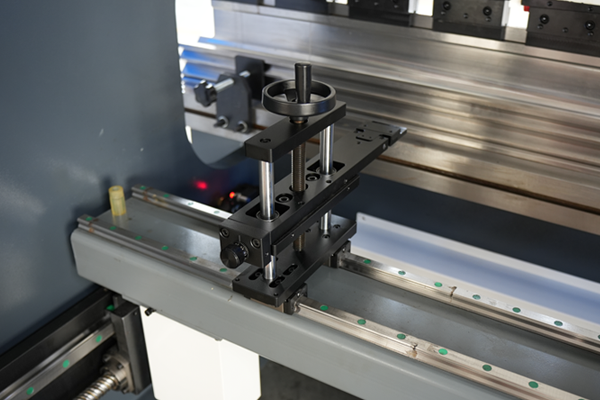
Material Considerations: Metals Commonly Used in Press Braking
The performance of a press brake machine is not only influenced by the tooling but also by the type of metal being shaped. Different metals have unique properties that affect how they respond to the bending process. In this section, we’ll discuss some of the most commonly used metals in press braking and what to keep in mind when working with them.
Aluminum, known for its lightweight and malleability, is popular in applications where weight is a concern. However, it can be quite soft, which means that the press brake tools must have sharper angles and radii to prevent material wrapping around the tool.
Carbon steel, on the other hand, is incredibly strong and requires more force to bend. This means that the press brake and its components must be able to withstand high stress and pressure. Tooling for carbon steel often has broader angles and larger radii to accommodate the material's rigidity.
Stainless steel is yet another commonly used material, prized for its corrosion resistance and strength. It requires tooling that can handle its hard nature without compromising on the bend angle or causing surface damage.
Each metal's thickness, grain direction, and ultimate tensile strength will influence the choice of press brake dies and the force applied during bending. Therefore, a comprehensive understanding of material properties is indispensable for achieving the desired outcome in press braking.
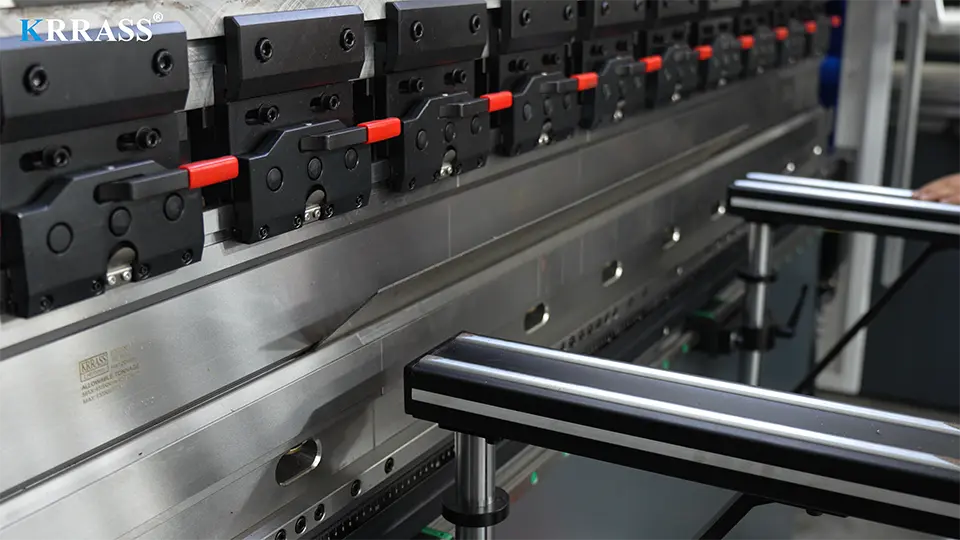
Standard vs. Precision: Choosing the Right Tooling
In the realm of press brake tooling, the terms 'standard' and 'precision' are not just indicative of quality, but also compatibility, performance, and the intended use of the tooling. Understanding the difference between the two is critical for manufacturers to meet project specifications and maintain operational efficiency.
Standard tooling is widely used and typically more cost-effective. It's suitable for general bending operations where tolerances are not extremely tight. Standard tools are also more readily available and can be a versatile choice for various applications, making them a staple in many fabrication shops.
Precision tooling, however, is manufactured to higher tolerances and is designed for applications where accuracy is paramount. These tools are especially beneficial when working with complex parts or materials that require a high degree of consistency. Precision tooling is often made of higher-quality materials and undergoes rigorous quality checks to ensure superior performance.
The choice between standard and precision tooling should be influenced by the specific requirements of the job at hand. Consider factors like the material thickness, bend angles, and the required tolerances of the final product. Precision tooling may represent a higher upfront cost, but for complex or high-precision tasks, the investment can lead to greater accuracy and lower costs over time due to reduced waste and rework.
Types of Press Brake Tooling
Punches: Shapes and Applications
Punches are a critical component of press brake tooling, designed to interact with the die to create the desired bend. Their shapes are varied, each serving a specific purpose in metal fabrication.
Straight Punches
Straight punches are the workhorses of press braking, used for forming simple, straight bends. They are versatile and can be used with a variety of die openings for different material thicknesses.
Gooseneck Punches
Gooseneck punches, characterized by their distinctive shape, allow for the clearance of flanges during bending operations. They are ideal for forming channels or boxes where straight punches would be obstructed by the metal's profile.
Hemming Punches
Hemming punches are specialized for hemming operations—folding the edge of a sheet metal to itself to create a clean, safe edge. They are often used in two stages: the first to create an acute bend, followed by another to flatten it.
Dies: Varieties and Their Uses
Dies, the counterparts to punches, come in numerous shapes and sizes, each designed to aid in specific types of bends.
V-Dies
The most common type of die, the V-die, is named for its V-shaped groove and is used in conjunction with a variety of punch types to create a wide range of bend angles.
U-Dies
U-dies, similar to V-dies but with a U-shaped groove, are used for applications requiring larger radii and are especially useful in bottoming operations.
Rotary Bending Dies
Rotary bending dies are unique in their operation, bending the metal around a rotating die. This method is gentle on the material surface and is often used when working with pre-painted or delicate materials.
Special Tooling: When to Use and Why
Special tooling is employed for specific tasks that standard punches and dies can't accomplish due to unique material properties or intricate part designs.
Radius Tooling
Radius tooling is used to produce rounded bends with specific radii. These tools are crucial when a project requires a gentle bend to avoid material stress or cracking.
Offset Bending Tooling
Offset bending tooling creates bends in two directions simultaneously, forming a Z-shaped profile in one stroke. This reduces the need for multiple setups and handling of the part.
Louver Tooling
Louver tooling is designed to create louvers in sheet metal, which are typically used for ventilation or heat dissipation. This tooling not only cuts the metal but also forms it into the distinctive louver profile.
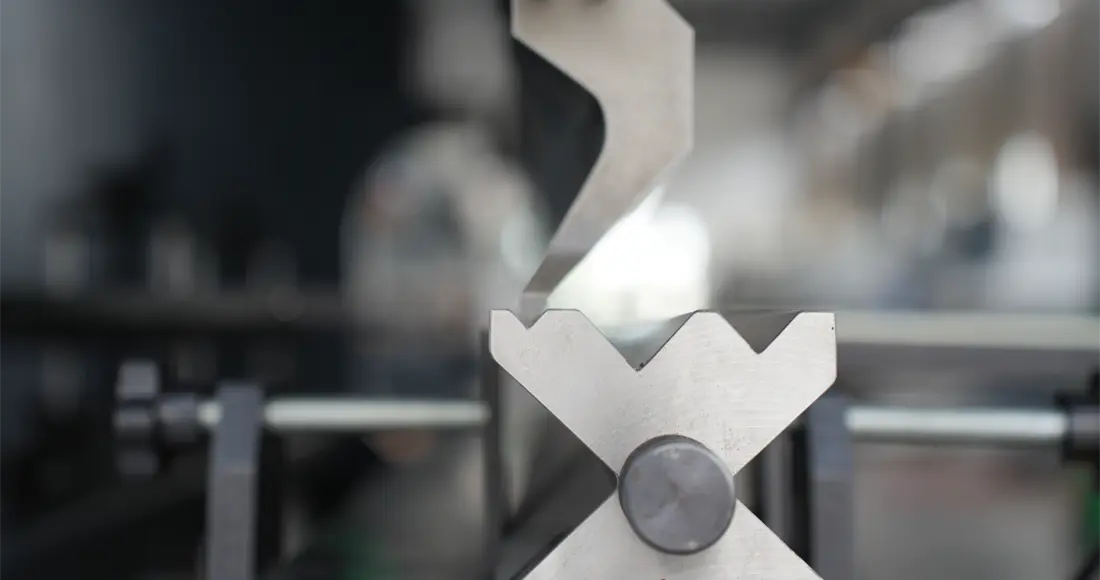
Tooling Materials and Durability
Tool Steel Grades: A Comparative Analysis
The choice of steel grade for press brake tooling is a critical factor that directly impacts its durability and performance. Various grades of tool steel, each with its unique composition and properties, are used to match the demands of different bending tasks.
For instance, A2 steel is valued for its wear resistance and is a common choice for tooling that requires a sharp edge. D2 steel, known for its high hardness, offers even greater wear resistance, making it suitable for high-volume or abrasive applications. Meanwhile, O1 steel is easy to sharpen and is often used for more intricate tooling designs where a keen edge is essential.
Heat Treatment: Enhancing Tool Longevity
Heat treatment processes such as hardening and tempering are employed to enhance the durability and performance of tool steels. By carefully controlling the heating and cooling cycles, the steel structure is altered, resulting in improved hardness and toughness. This treatment is pivotal in extending the life of press brake dies and punches, particularly in high-stress environments.
Coatings and Finishes: Improving Performance and Life
To further augment the longevity and efficiency of tooling, various coatings and finishes can be applied. Titanium nitride (TiN) coatings, for example, can significantly increase surface hardness, reduce friction, and provide a non-stick surface that minimizes material adhesion. Other coatings like chromium nitride (CrN) or tungsten carbide can also be used depending on the specific requirements of the bending process.
Compatibility and Machine Parameters
Matching Tooling to Press Brake Specifications
Selecting the right press brake tooling goes beyond just the type and shape—it’s essential to ensure that the tools are compatible with the specific press brake machine being used. This involves understanding the machine's parameters, such as its clamping style, maximum tonnage, and working length. Tools must be designed to fit the press brake securely and operate within its performance capabilities to avoid tool or machine damage.
Tonnage Considerations: Calculating Requirements
The tonnage requirement for a bending operation is a function of the material type, thickness, length of the bend, and the type of die used. It’s crucial to calculate the necessary force to ensure that the press brake can handle the job without being overloaded. Using a tool that requires more tonnage than the machine can provide can lead to inaccurate bends and excessive wear or damage to the press brake and tooling.
Working Length: Ensuring Consistency Across Bends
The working length of the machine—its ability to handle the length of metal being bent—must be adequate to ensure consistency across bends. For long workpieces, the press brake must have a uniform tonnage distribution along its entire length to avoid inconsistencies. Tooling must be selected with this in mind, ensuring that it can produce uniform bends across the entire working length of the press brake.
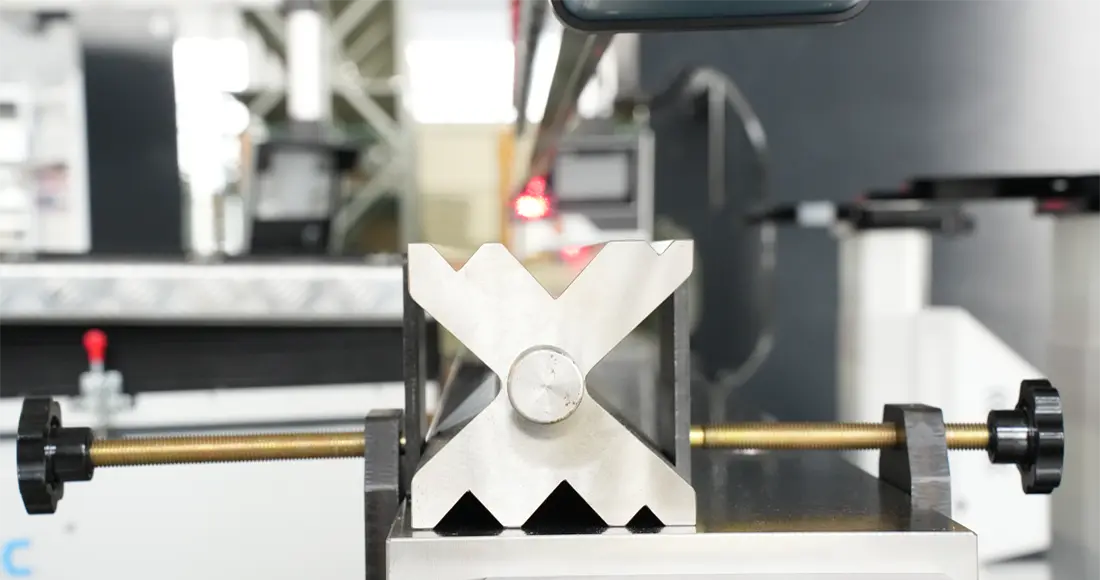
Rules for Tooling Selection
Accuracy and Tolerance: Meeting Design Specifications
The paramount rule in selecting press brake tooling is ensuring the ability to meet the design specifications of the end product. This means choosing tools that can achieve the necessary accuracy and tolerance levels. Precision tooling is often required for projects demanding tight tolerances, as even minor deviations can be unacceptable for the functionality or aesthetics of the piece.
Tooling Flexibility: Maximizing Machine Capability
Flexibility in tooling enables operators to utilize the full range of the press brake machine's capabilities. Selecting a versatile tooling set can reduce the number of tool changes needed, allowing for a more diverse range of bending operations to be completed efficiently. This versatility is key in responding to varying job requirements and material types.
Setups and Changeovers: Efficiency in Operation
Minimizing the time spent on setups and changeovers is crucial for operational efficiency. Quick-change tooling systems can drastically reduce downtime between jobs, which is particularly beneficial in high-mix, low-volume production settings. Tools that require less time to set up and adjust can significantly improve workflow and reduce overall project lead times.
Maintenance and Safety
Regular Maintenance: Protecting Your Investment
Regular maintenance is key to prolonging the life of press brake tooling and the press brake machine itself. This includes routine inspections for wear and damage, proper cleaning after each use, and storing tools in a manner that prevents corrosion or other forms of deterioration. Keeping tooling in top condition not only protects the investment but also ensures consistent manufacturing quality.
Safety Measures: Ensuring Operator Well-Being
Safety should always be paramount when operating a press brake. This includes the use of proper personal protective equipment (PPE), adherence to operational guidelines, and ensuring that all safety features of the machine are functional and in use. Training operators to handle tooling correctly and to be aware of the hazards involved in bending operations is also crucial in preventing accidents.
Troubleshooting Common Issues
Operators should be adept at troubleshooting common issues such as incorrect bending angles, tool misalignments, or uneven wear. Identifying and rectifying these issues promptly can prevent further damage to the tooling or the workpiece and reduce downtime. A clear understanding of the press brake's functions and the tooling's performance characteristics is essential for effective troubleshooting.
Economic and Production Considerations
Cost-Benefit Analysis of Tooling Options
A comprehensive cost-benefit analysis can guide fabricators in selecting press brake tooling. It's crucial to weigh the initial costs against the benefits, such as increased production efficiency, reduced waste, and the potential for greater precision and consistency. Cheaper tooling might save money upfront but could lead to higher operational costs in the long run due to more frequent replacements or maintenance needs.
Lifecycle Costing: Understanding Long-Term Investments
Lifecycle costing is about looking at the tooling's price tag through the lens of its entire lifespan. This includes considering the durability of the tooling materials, the costs associated with downtime for maintenance or replacement, and the tooling's impact on the life of the press brake machine itself. High-quality tooling may have a higher initial cost but can prove to be more economical over time due to its longevity and the efficiency it brings to production processes.
Production Speed vs. Tooling Choice: Finding the Balance
The choice of tooling also affects production speed. While high-precision tooling may reduce speed due to more detailed setups or slower operation to maintain accuracy, the trade-off might be necessary for complex or high-tolerance parts. Conversely, for simpler jobs where speed is a priority, standard tooling might be the best choice. The key is to find the right balance for each project's requirements, ensuring that production is both efficient and cost-effective.
Choosing the Best Press Brake Tooling with Krrass
In conclusion, the right press brake tooling is pivotal for achieving the precision your projects demand. As a leading manufacturer, Krrass offers an unparalleled selection of press brake machines and tools, designed with cutting-edge technology and precision. Discover how our expertise can elevate your metal fabrication processes by visiting www.krrass.com. Partner with Krrass, where excellence in press brake solutions is just the beginning.
Read More:
Press Brake Bending: Basics & Tips
